Terrariums are the epitome of millennial spending.
Stunning, somewhat pointless, often expensive, and absolutely the reason we can’t afford our own houses…
As we all know, terrariums come in all shapes, sizes, and types, and it’s the finer details that ultimately determine the cost.
The terrariums I’ve personally created have fallen between $10 and $130, so you can see how wide a range there is, even within similar projects.
So, the short answer to “What does an average terrarium cost?” (that absolutely no one wants to hear) is: it entirely depends!
The long answer to this ever-important question, however, I will answer in this article.
I’m going to take you through each individual element and what it costs so you can draw up a figure for your specific terrarium project. I’ll also give you my tips for keeping costs down at the end if you’re working with a budget.
Ready? Let’s splash the cash!
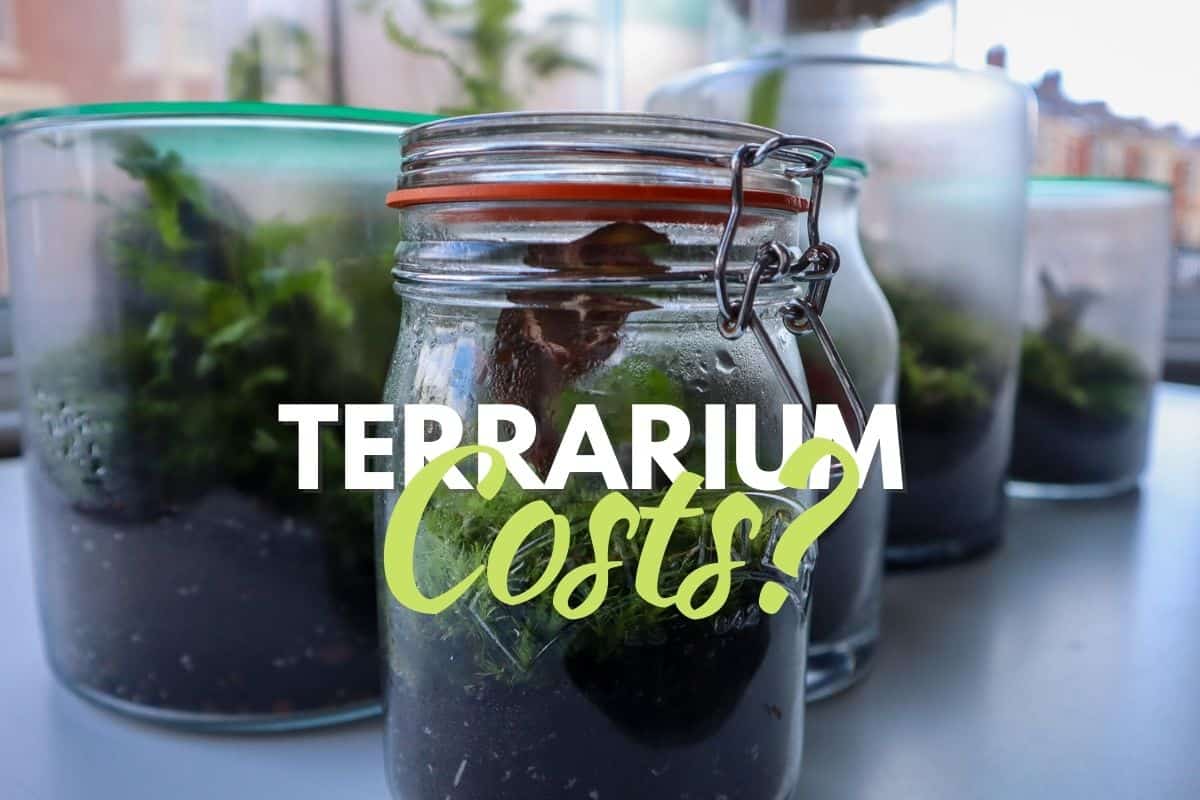
Terrarium Tribe is reader-supported. When you purchase through links on our site, we may earn an affiliate commission (at no further cost to you). 💜
How Much Does a Terrarium Cost to Build?
Glassware
Naturally, glassware is the item with the most extensive range of prices. But it’s also the easiest to thrift and source cheaply – old fish tanks and vases can work great.
I got many of my pieces from TKMaxx (TJ for you guys in the states) for around $15-20, and even Ikea has some viable vessels sometimes.
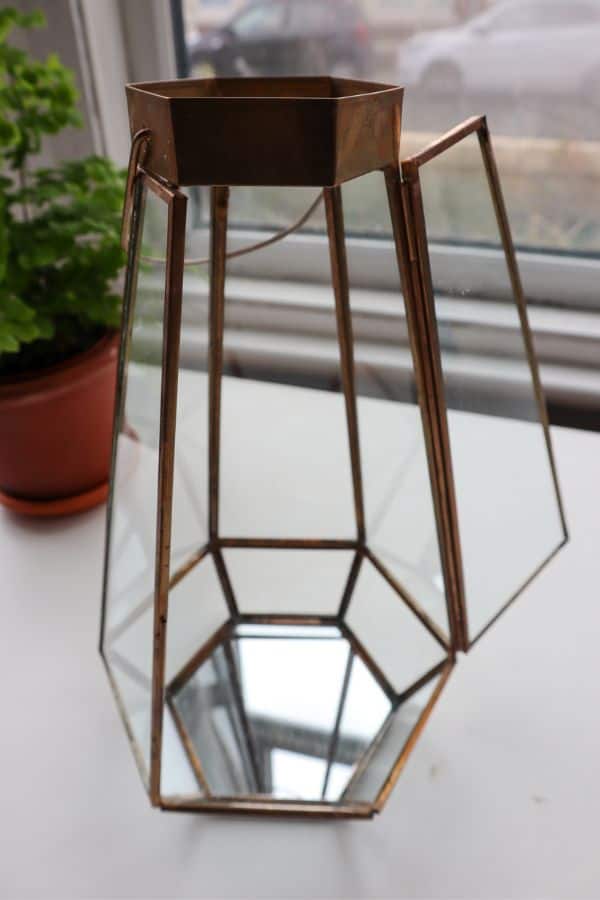
Large glassware pieces like these stunning Wardian case designs by LeadHeadGlass will set you back somewhere between $100-200 depending on size.
For massive projects – specifically, those built to house animals – a fully automated vivarium tank can cost around $400.
Just bear in mind that unless the container purpose-built, containers often come without lids, so you’ll need to have a perspex or cork lid cut. I do this for most of my builds, and they usually cost less than $10.
Terrarium Plants
Plants for terrariums can cost anywhere from nothing to literally thousands of dollars for the latest rare variegated Monstera.
But in my experience, most typical terrarium plants roughly come in around $5-15 each.
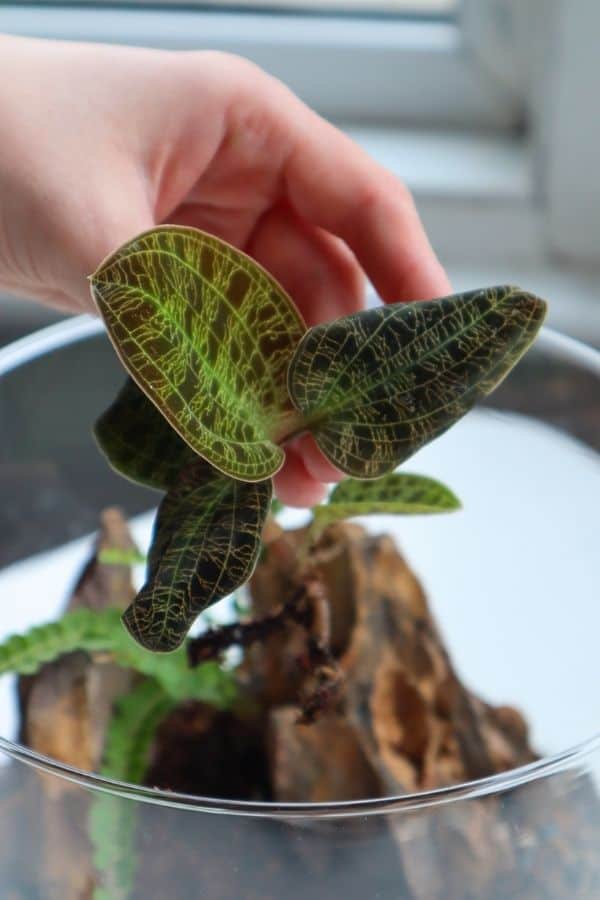
But as always, it depends on what plants you choose and, ultimately, how many you need for your build.
Unless you want a specifically rare or large plant, plants from the Pilea and Peperomia genera tend to be inexpensive, so that’s a good place to start your search if you want cheaper options.
And don’t forget terrarium moss!
For reference, I roughly spend around $12 on moss for each build.
Substrate and Drainage
To build a terrarium with longevity, nailing the substrate mix is arguably one of the most crucial steps. Because plants need a mixture of substances to keep them happy, there are two ways you can approach this:
- Purchase a pre-made mix – more cost-effective if you’re only building a project or two.
- Purchase the individual elements and make your own – more cost-effective if you’re building several or large projects.
A good example of a pre-made mix is the classic ABG mix, named after its place of origin – the Atlanta Botanical Gardens.
A 1-quart bag is typically around $10, and you can expect a little over $20 for a 4-quart bag. Just make sure you get a mix that substitutes peat moss for another appropriate ingredient, as using it is extremely harmful to the environment.
👉 Our peat-free (ABG-inspired) terrarium substrate mix costs $13.95 per gallon.

If you want to create your own mix – head to our terrarium substrate guide to find out what elements are best for your build.
If you choose to use a drainage layer, pretty much any material goes, so it certainly doesn’t need to be expensive. A layer of gravel, pebbles, or leca is great.
👉 We sell leca bags starting at $4.95 per quart.
Hardscape & Extras
While not essential in the least, hardscape is a hugely important part of setting the scene.
What environment is complete without a gnarling branch or a jagged rock?
Dragon stone is an excellent, cost-effective option.
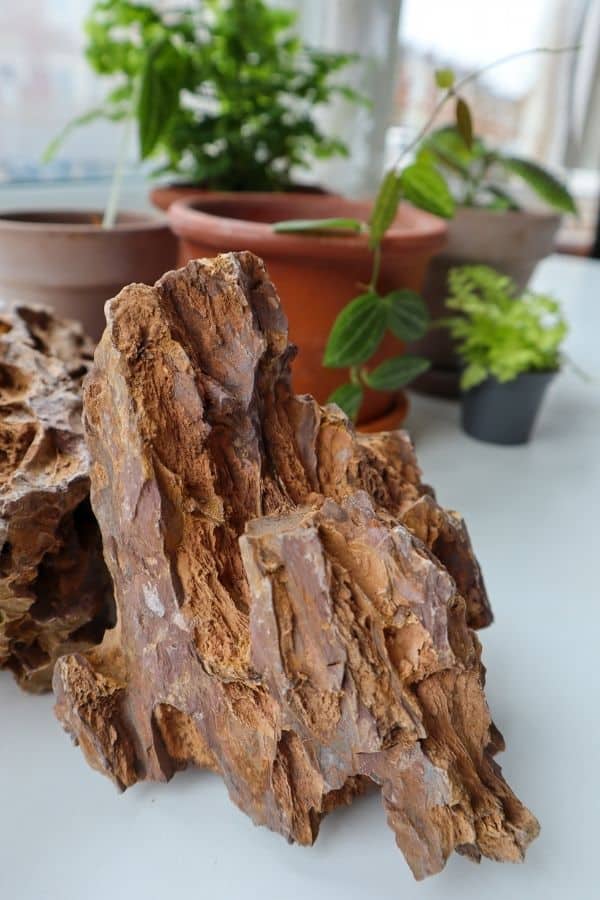
The prices do skyrocket for more unusual rocks and wood, though; if you want to spend $80 on a rock, this is the hobby for you.
I personally wouldn’t spend more than $20 on a single element; there really isn’t any need.

Terrarium Tools
When I’m building and caring for terrariums, there are only two things I really need:
- Angled paintbrush like this one. I use the handle to create holes in the substrate for planting and the brush to get substrate off the leaves and glass – expect to pay about $5.
- A spray bottle for watering should cost no more than $10. You can grab one from our store right here.
I also always use these (but you could probably manage without them if you only want to build one terrarium):
- Long aquascaping tweezers for placing fiddly plants and moss – costing about $10.
- Long aquascaping scissors for maintaining and trimming my plants – costing about $10.
👉 You can grab the aquascaping tools from Etsy.

Bioactive Terrarium Additions
These days, springtails are a fairly standard addition to any terrarium build.
If you’re not familiar, springtails are nature’s solution to one of the biggest challenges in the hobby – keeping mold at bay. These tiny critters helpfully eat mold and provide an exciting opportunity to turn your terrarium bioactive.
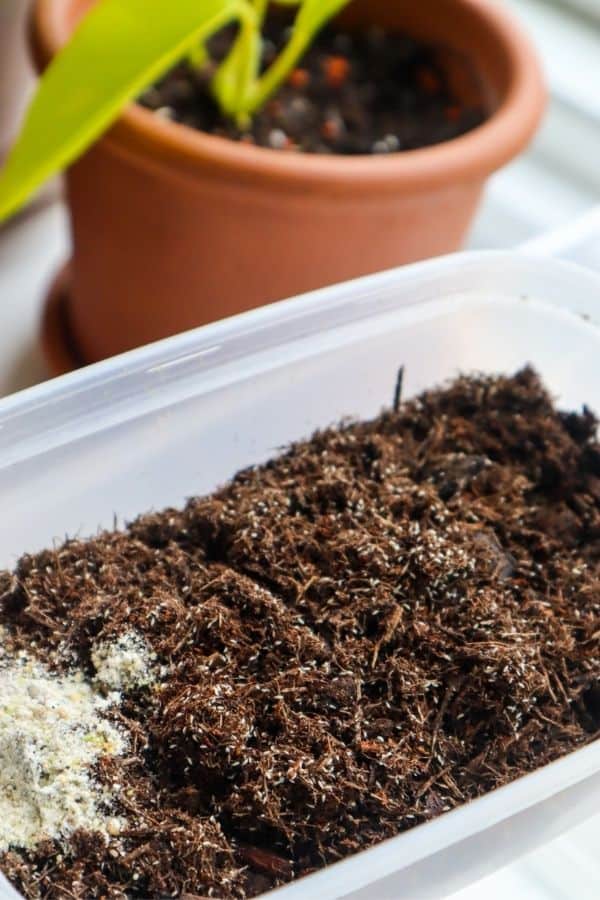
👉 We sell springtail cultures for $14.95.
Isopods are quickly becoming a familiar face on the scene too, and the cost varies from breed to breed. On our online store, prices start around $15 for common breeds such as the Dairy Cow Isopods and go beyond $100 for the ridiculously cute and super rare Ducky Isopods (yes, really).
More on Animals
Of course, beneficial terrarium bugs are just the starting point. And if you’re edging into the living vivarium world, there’s a whole host of vivarium pets and reptiles that will naturally cost more to purchase.
Their unique care needs will also underpin the cost of the enclosure build and continued maintenance (food, filtration, environmental requirements such as an aquatic area, heat sources, cleaning, and electricity costs).
Total Terrarium Cost – Case Study
Till this point, I’ve been hitting you up with a tonne of watery “it depends” and “it varies.”
So, let me take you through a terrarium build of my own.
*I want to preface this by saying that I wasn’t actively trying to keep costs down (after all, building terrariums is a part of my work), and it’s also a little larger than your average terrarium. So bear that in mind, but it should give you a good idea regardless.
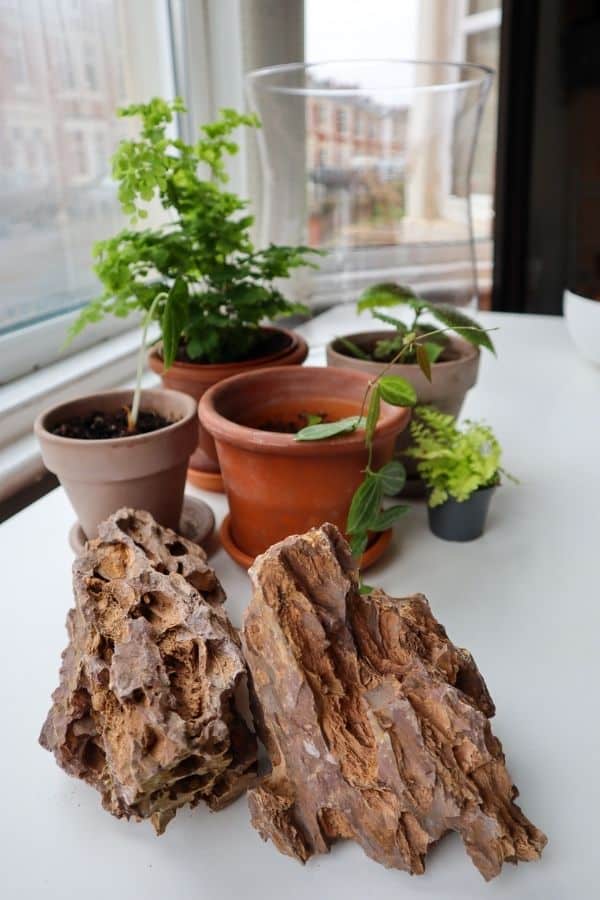
Let’s break it down:
The glassware I picked up from TK Maxx for roughly $19. It came without a lid, so I bought a custom perspex lid for $10, taking the total to $29.
For my terrarium plants, I chose Pilea Moon Valley ($6.30), Boston “Blonde” fern ($6.30), Dischidia ovata ($12.60), around half a Maiden Hair Fern (the whole plant was roughly $10 – so $5), a tonne of Cushion Moss ($12.60), and finally a teeny Alocasia Black Velvet – my mother plant (purchased for around $12) produced bulbs so this little one was FREE!
So, to summarise, that’s $42.80 on plants.
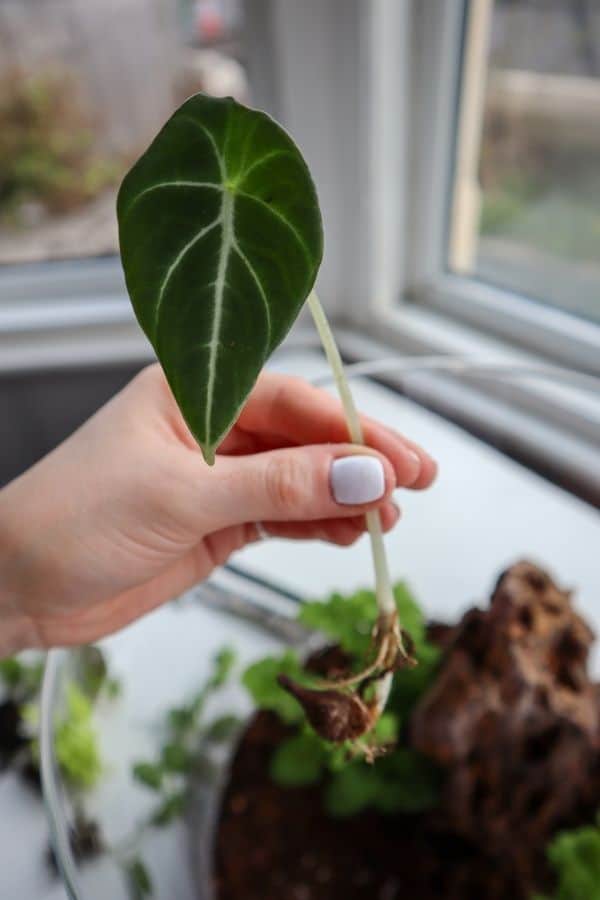
With substrate & drainage, it’s a little harder to pin down the exact costs because I used materials I’d previously bought. However, my educated estimate is that I spent around $13. It’s a reasonably large container and took quite a lot to fill (I used a whole bag of leca for the drainage).
Now hardscape, my sexy chunk of dragon stone cost $7.50.
For terrarium tools, I already owned what I needed, so that brought about no further costs.
Bringing the total cost to $92.30 (£73.40, €85.80) welp. I imagine I spent even more with delivery fees too…
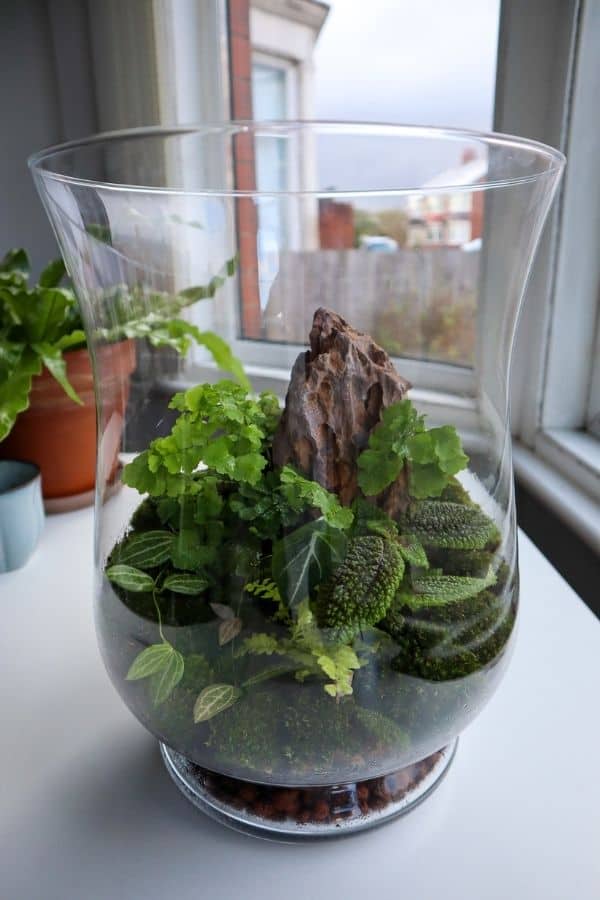
Ways to Keep Terrarium Costs Down – Cheap Terrarium 101
If you’re horrified at the cost of building your own creation, I’ve got you.
While it’s wise to be cautious of some “how to make a terrarium for free” guides (hello, environmental destruction), there are absolutely ways of doing it frugally.
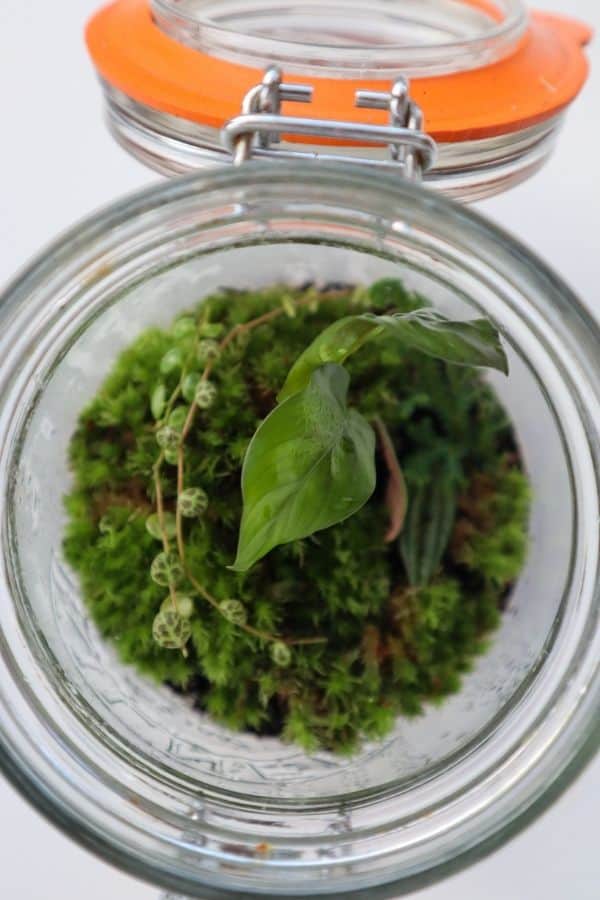
- Get snippy with your houseplants and use the cuttings. You might be surprised how many common houseplants are suitable for a closed terrarium.
- If you have more succulents and cacti than tropical plants, find a local plant swap/Facebook group and get swapping. Our local group is a few thousand people strong, and I’ve both given and received SO many plants on there.
- It goes without saying that you can get creative with what you already have at home. How about creating a liquor bottle terrarium or using rocks and crystals you already have as hardscape?
- Thrift your glassware! The saying “one man’s trash is another man’s treasure” has never been so true than when it comes to upcycling old glass containers.
- Buying online tends to be cheaper than gardening stores, and you can save on delivery by getting everything from a single source (hint, our online terrarium store has everything you need).
- If you want to play with a fairy garden theme and include figurines and miniatures, you can create your accessories with oven-hardening modeling clay.
👉 Check out my cheap terrarium guide for an in-depth breakdown of these thrifty ideas.
How Much Does a Terrarium Cost to Buy?
If you don’t want to get your hands dirty, you can purchase a terrarium from a local builder, but bear in mind that it will need to be purchased locally, as terrariums can’t be transported long distances.
You’re not only paying for the materials but also their time and expertise, so it could cost anything from $50 for a small piece to $300 for a larger terrarium to potentially thousands for huge vivarium installations.
That’s It!
Hopefully, you have a good idea of how much a terrarium costs.
I love the challenge of a cheap build, and I also love pulling out all the stops for the right project.
Do you want to keep it economical, or are you willing to splash the cash? Let me know in the comments!
